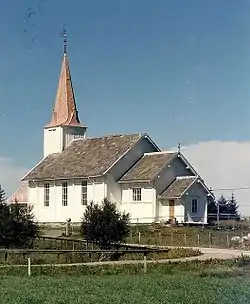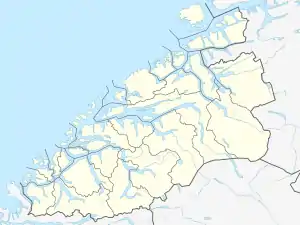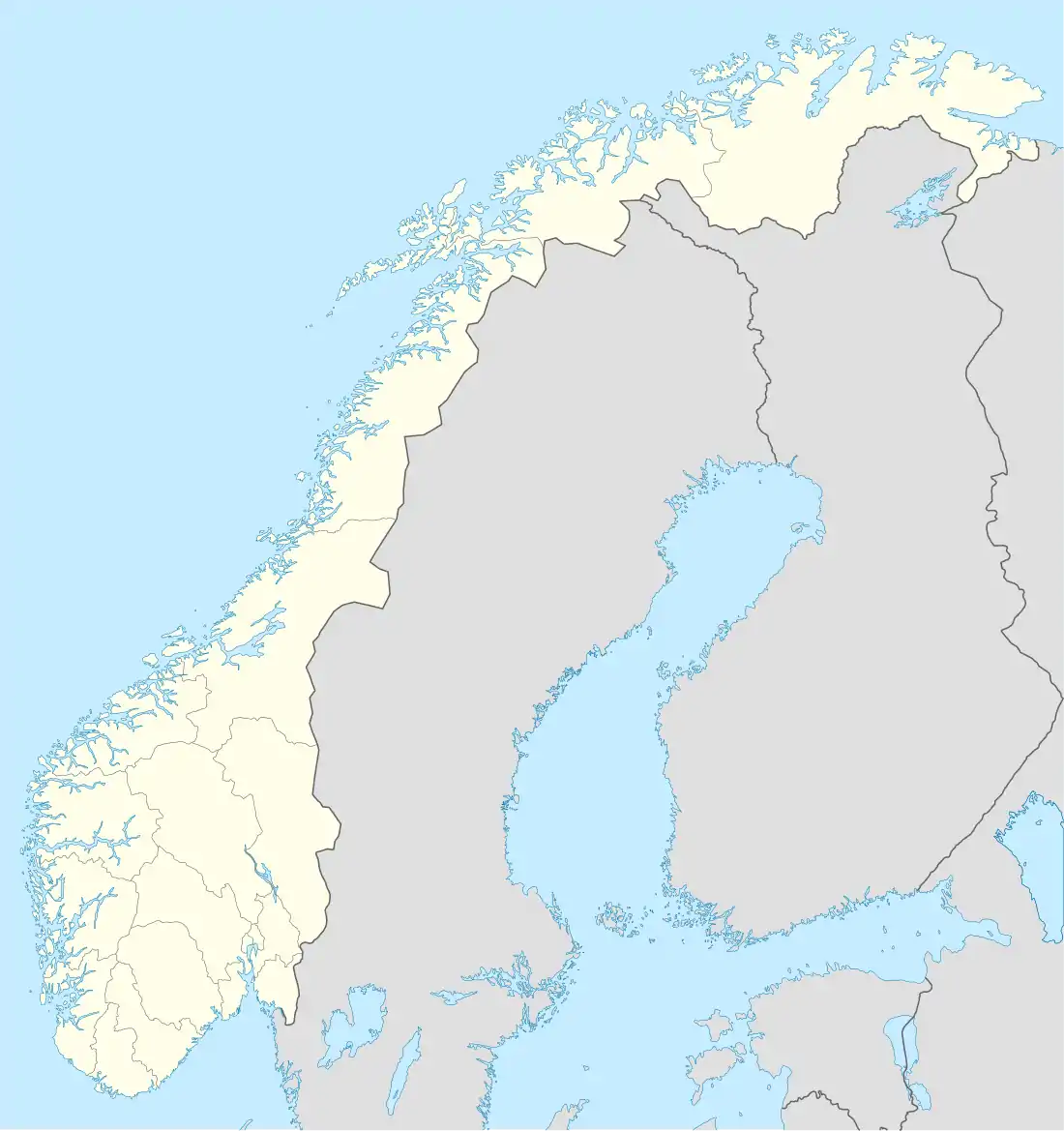Edøy Church
Edøy Church (Norwegian: Edøy kirke) is a parish church of the Church of Norway in Smøla Municipality in Møre og Romsdal county, Norway. It is located in the village of Edøy on the southern coast of the island of Smøla. It is the main church for the Edøy parish which is part of the Ytre Nordmøre prosti (deanery) in the Diocese of Møre. The white, wooden church was built in a long church style in 1885 by the architects Jacob Digre and Johan P. Digre. The church seats about 365 people.[1][2]
| Edøy Church | |
|---|---|
| Edøy kirke | |
 View of the church | |
 Edøy Church Location of the church  Edøy Church Edøy Church (Norway) | |
| 63.3340°N 8.0657°E | |
| Location | Smøla Municipality, Møre og Romsdal |
| Country | Norway |
| Denomination | Church of Norway |
| Churchmanship | Evangelical Lutheran |
| History | |
| Status | Parish church |
| Architecture | |
| Functional status | Active |
| Architectural type | Long church |
| Completed | 1885 |
| Specifications | |
| Capacity | 365 |
| Materials | Wood |
| Administration | |
| Parish | Edøy |
| Deanery | Ytre Nordmøre prosti |
| Diocese | Møre |
History
The church was built in to replace the Old Edøy Church as the main church for the municipality of Edøy. The old church was on the island of Edøya, but this new church was built on the island of Smøla to be closer to the majority of the parish's population.
In 2019, archaeologists from the Norwegian Institute for Cultural Heritage Research using large-scale high-resolution georadar technology, determined that a 17 meter long Viking ship was buried near this church. Traces of a small settlement were also found. They estimate the ship's age as over 1,000 years: from the Merovingian or Viking period. The group planned to conduct additional searches in the area. A similar burial was found previously by NIKU archaeologists in 2018, in Gjellestad.[3]
See also
References
- "Edøy kirke". Kirkesøk: Kirkebyggdatabasen. Retrieved 2019-03-31.
- "Oversikt over Nåværende Kirker" (in Norwegian). KirkeKonsulenten.no. Retrieved 2019-03-31.
- "Ancient Viking ship discovered buried next to church using breakthrough georadar technology". The Independent. 27 November 2019. Retrieved 27 November 2019.
This will certainly be of great historical significance, archaeologists say